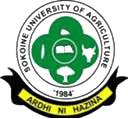SUMMARY
Background: Viral haemorrhagic fevers (VHFs) refer to a group of illnesses that are caused by several distinct families of viruses. The term VHF is used to describe a severe multisystem syndrome characterised by an overall vascular system damage. Although no clinical cases of Ebola, Marburg or Yellow fever have been reported in Tanzania, its geographical position puts the country at high risk. With no known cure for all VHFs, the health systems rely on prevention and control strategies to contain new outbreaks. Early detection and diagnosis is a key trigger effective response to infectious disease epidemics.
Broad Objective: Strengthening capacity for surveillance and preparedness against viral haemorrhagic fevers in Tanzania. Specifically, the study aims to: (i) To develop and/or assess a genomics driven near-field based (multiplex) diagnostic system for surveillance of potentially high risk VHFs (Ebolavirus, Marburg, RVF, CCHF, Yellow fever and Arenaviruses) in Tanzania; (ii) To undertake a risk assessment of factors that increase the probability of incursion of VHF pathogens into Tanzania; (iii) To carry out clinical evaluation of diagnostic 2
tools developed under Objective 1 in areas identified as high risk by the risk assessment of Objective 2; (iv) To build capacity through training of staff in the wide application of molecular and serological technologies, and their derivatives, as tools for primary analysis of diagnostic samples; (v) To assess community knowledge and livelihood practices that influence prevalence and acquisition of VHFs in Tanzania
Methods: The study will involve all five ecological zones in Tanzania. The districts to be involved include Buhigwe, Kalambo, Kyela, Kinondoni, Kilindi, Mvomero, Kondoa, and Ukerewe. Mapping of the ecological zone will be done. All age groups individuals, except those less than 9 months of age will be sampled. Sampling will be done within the complete household which is selected and no household will be replaced if the residents are not found to be at home. Individuals will be asked to provide a blood sample. A total of 5-19 ml of blood will be collected from adults and children >10 years by venipuncture and one to three mls will be collected from children ≥9 months and ≤10 years of age also by venipuncture. Information on socio-demographic characteristics (age, sex, occupation, village, workplace, residence) will be collected for each subject. History including recent history of febrile illnesses, and other risk factors will be ascertained for all participants. Clinical parameters will be documented. The study-related questionnaires will be completed for each consented and assented subject who will then formally enrolled into the study using unique identification code that will restrict direct identification of individuals. All specimens will be processed at the Genome Centre at the Sokoine University of Agriculture laboratory in Morogoro, Tanzania.
Outcomes: The expected outcomes include: (i) Enhanced capacity for risk analysis of the potential for incursion of an emerging/re-emerging disease in Tanzania; (ii) Enhanced research and diagnostic capacity to detect and identify viral haemorrhagic fevers by sharing research resources including specimens; (iii) Enhanced virological capability within the Tanzanian public health systems; (iv) Institutional collaboration between Korea and Tanzania strengthened; and (v) Policy and practice support guidance provided through research evidence.
This is a three-year project estimated to cost USD 195,000.
Project Members:






